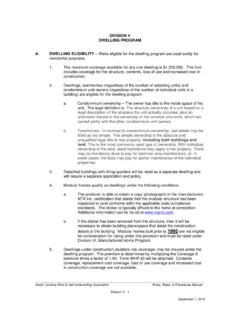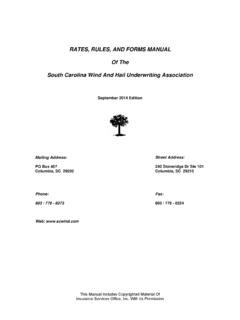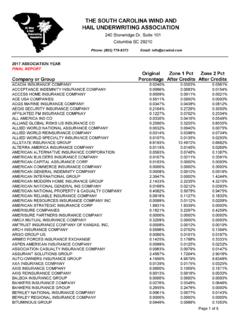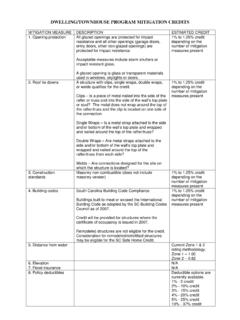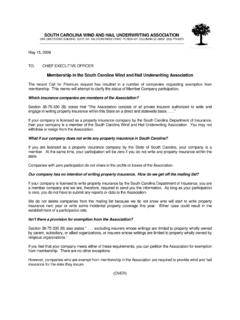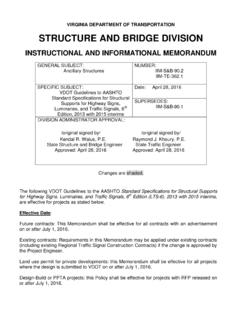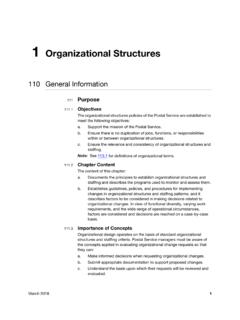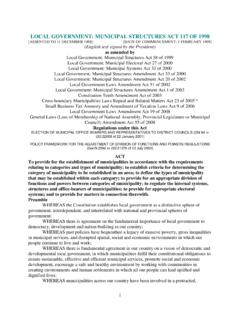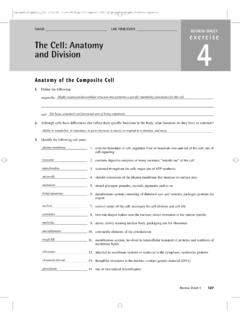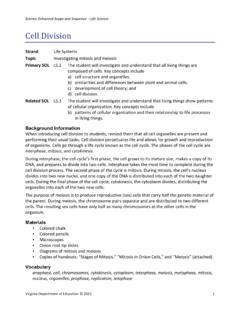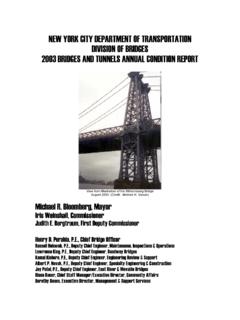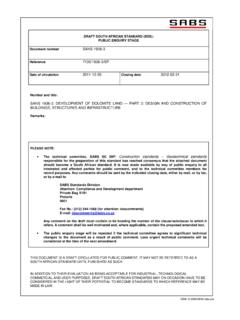Transcription of DIVISION X FREQUENTLY ASKED QUESTIONS A. …
1 _____ South Carolina Wind & Hail Underwriting Association Rules, Rates, & Procedures Manual DIVISION X - 1 September 1, 2014 DIVISION X FREQUENTLY ASKED QUESTIONS A. ACTUAL CASH VALUE, DEPRECIATION AND THE CLAIMS PROCESS 1. How do you determine actual cash value? The South Carolina Wind & Hail Underwriting Association s policies are primarily written on an actual cash value basis (ACV). Actual cash value is equal to the replacement cost of new materials minus any physical depreciation (ACV = replacement cost - depreciation) at the time of loss.
2 We determine depreciation based on a combination of objective criteria (taking into account the category and age of the property) and the adjuster s assessment based on visual observations or a photograph of the property. 2. How is depreciation calculated? The most common method of calculating depreciation is based on the life expectancy of the item, with adjustments made for the item s age and condition. For example, the normal life expectancy of a composition roof is 20 years. Under normal conditions, the roof depreciates at a rate of 5 percent per year. If the roof is eight years old with typical wear and tear, the depreciated amount is 40 percent.
3 (5 percent x 8 years = 40 percent.) The actual cash value of the roof is 60 percent of the replacement cost. (100 percent - 40 percent = 60 percent). Age alone does not determine ACV. An older structure may be properly maintained and periodically updated. For instance, the heating and air conditioning system may be less than five years old. The siding may have been recently painted and any deteriorated wood replaced. In such a situation, depreciation may be limited on those components of the building. Most courts, however, when using replacement cost as a basis for determining actual value, take depreciation into account.
4 This method is favored because it comes closer to reimbursing an insured for the actual loss. In loss situations, an insured will normally repair or replace property with new materials. In most instances, this will increase the value of the property and if the insured were reimbursed the full amount of the repair costs, the insured would recognize a gain. Therefore, a reduction for depreciation is proper in calculating the actual cash value of the loss. Finally, the modern trend in determining actual value in South Carolina is the "broad evidence rule" test. Under this rule, any evidence logically tending to the formation of a correct estimate of the value of the insured property at the time of loss is used.
5 This broad rule allows the adjuster to consider such items as: market value real estate listings economic conditions pending contracts of sale functional obsolescence tax assessments replacement cost prior sales of the property depreciation real estate appraisals age of the property use original cost
6 Location condition of the property _____ South Carolina Wind & Hail Underwriting Association Rules, Rates, & Procedures Manual DIVISION X - 2 September 1, 2014 B. MITIGATION PROGRAM 1. Why did you implement a mitigation credit program? Section 38-75-755 of the South Carolina insurance code requires insurance companies to notify policyholders of the availability and range of each premium discount, credit and other differential, or reduction in deductibles for properties on which fixtures or construction techniques demonstrated to reduce the amount of loss in a windstorm have been installed or implemented.
7 The change was contained in a South Carolina Department of Insurance sponsored bill (H380). The provision was effective January 1, 2008. 2. What are the various options available to obtain mitigation credit? There are three ways in which an insured can obtain mitigation credits. The first method is the Insurance Institute for Business and Home Safety s Fortified Homes .. For Safer Living (IBHS). The credit is 20% and only applies to the dwelling program. To obtain the credit, the insured must produce a document from IBHS which certifies that the home was constructed to the IBHS Fortified For Safer Living standards.
8 The second option is the SC Safe Homes Program. The South Carolina Department of Insurance sponsors this program. Consumers can have a certified inspector conduct an inspection of the property. If deficiencies are found, there is a list of certified contractors that can perform the work necessary to bring the home in compliance with the program standards. Additionally, there is a grant program from the state to assist in funding repairs. There is a 5% credit available at the time of certification. The credit applies to the dwelling and mobile home programs. The insured must supply a copy of the SC Safe Home Program inspection as well as a copy of the report from the certified contractor indicating that the home is in compliance with the standards.
9 The third method is Other Mitigation Techniques . The Association provides credit in each of four areas. These are as follows: Openings Impact resistant windows and/or shutters Roof Construction Techniques such as roof ties and/or clips Non-frame Construction Structures made of masonry non-combustible materials or better (does not include masonry veneer or hardi-plank construction) Building Codes Structures built which meet the 2006 building code and which were issued a certificate of occupancy on January 1, 2007 or later. _____ South Carolina Wind & Hail Underwriting Association Rules, Rates, & Procedures Manual DIVISION X - 3 September 1, 2014 The credits apply to the various programs as outlined in the following chart.
10 Opening Protection Roof Tie Downs Building Codes Non-Frame Construction Dwelling & Townhomes X X X X Manufactured Homes X X Condo-Unit Owners X X X X Commercial X X X X Indicates that a credit is available for that line of business/mitigation technique. Meeting one technique results in a 1% credit Meeting two or three techniques results in a 3% credit Meeting all four requirements results in a 5% credit (Commercial only) 1 requirement = 1%, 2 requirements = 3%, 3 requirements = 5% Two forms must be submitted to the Association in order to obtain credit.
